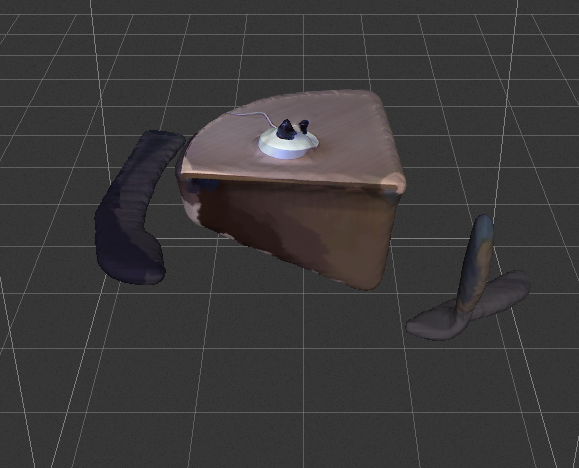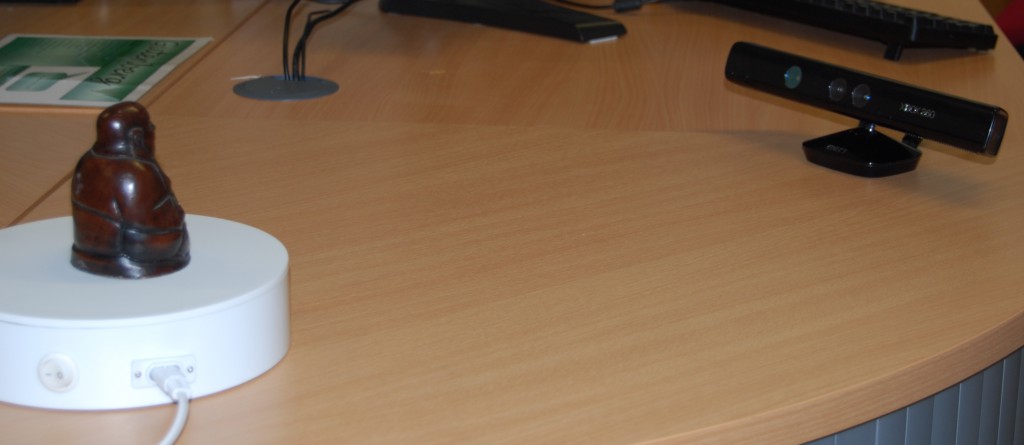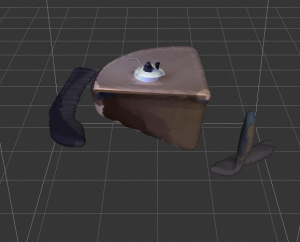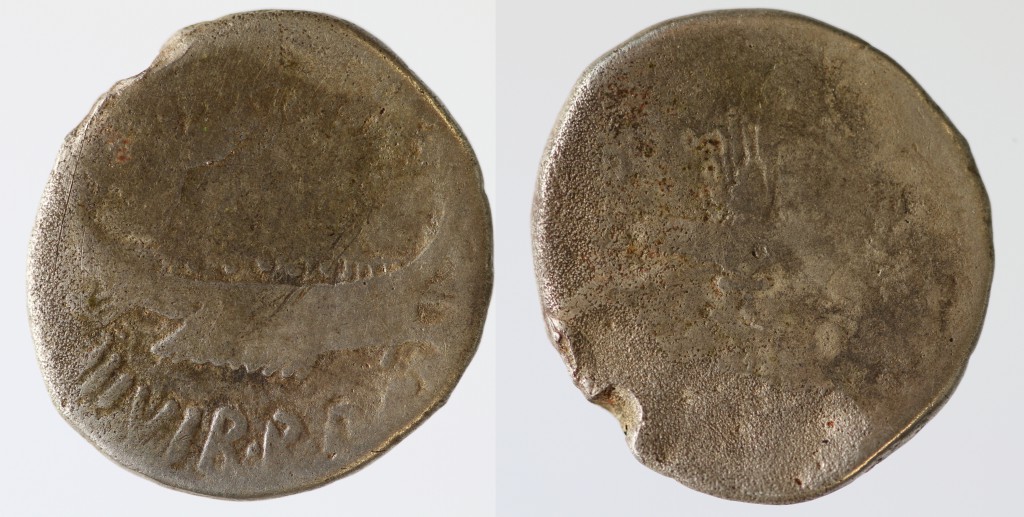
May 13, 2016, by Matt Davies
DHC Volunteer Projects 2016 part two: The Digital Image Creators.
3D scanning on a budget.
3D scanning technology is coming down in price but can still cost tens of thousands of pounds. DHC volunteer Connor March, a third year Archaeology student, has been working on constructing a 3D scanner here in the DHC using a Kinnect camera from an Xbox, a photographic turntable bought from E-Bay, and some open source software including Skanect to capture the scan, and Meshlab to process it. Approximate cost? £50!
Connor had no previous experience of 3D scanning but bravely took the project on. In doing so he has not only gained knowledge and experience of the equipment and software but also the time management skills required to fit project work around the many demands upon a final year undergraduate and valuable experience of coping with the difficulties of working on projects within the restrictions of any given institution. These have included incompatibilities between equipment, software and University operating systems, Kafkaesque administration systems and long lead times on purchasing items.
Connor will be graduating in a few weeks’ time and is hoping that the project will be continued by one of the 2016-‘17 DHC volunteers. Once up and running, the 3D scanner will be invaluable to future Faculty of Arts staff and students who visit DHC hoping to produce scans of objects for study and research. These may include archaeological finds, ancient coins, small Buddha’s (see image – it’s all we had at the time!) and other objet d’art or religious iconography! Once scanned an object might for instance be put into a 3D environment; a fragment of medieval pottery could be 3D scanned and then used in a graphic reconstructions of the time period say. 3D scanning such an object also allows the digital version to be used in place of the original and this helps sustain the preservation of the original and so is key to conservation.
Connor will be writing up the project so far for a blog over the next few weeks and will be watching ‘Digital Interactions’ next term for updates on the project that he started.
Capturing coins for Mint Imperials.
DHC has been pleased to help out on the fantastic Mint Imperials blog since its inception last year. A number of DHC Volunteers have worked with Dr William Leveritt to produce high resolution images of ancient coins using the DHC’s copy-stand and camera and have also helped research and write some of the blogs. This year’s Mint Imperialist is Classics 2nd year student Sarah Jordan who –again –had no previous experience of copy stand photography but leapt at the chance to gain some new skills.
Sarah quickly learnt how to set up camera and macro lenses, copy-stand and lights, and how to operate the camera remotely from a PC*. This system ensures there is no movement of either object or camera, long exposure shots can be taken if necessary, lighting and camera position can be set exactly and remain uniform across a number of shots. All of which, along with DHCs professional standard camera and lenses, ensures that maximum detail can be captured. Copy stand photography is an essential skill for anyone wishing to become a digital archivist and is also used throughout the heritage industry, the retail industry (all those beautiful images for websites and catalogues) and much loved by archaeologists; check out the talk one of them gave on the subject in DHC a few years back which has become our most watched YouTube video here.
Sarah has been particularly busy in DHC this year; besides utilising the copy-stand and camera to great effect, she has also been part of the DHC’s Collections team working on the Classics departments’ ISYP library which is also housed in the DHC. More on DHC’s collections and their keepers soon!
*the copy-stand PC also has PhotoShop, LightRoom is also available in DHC.
No comments yet, fill out a comment to be the first




Leave a Reply